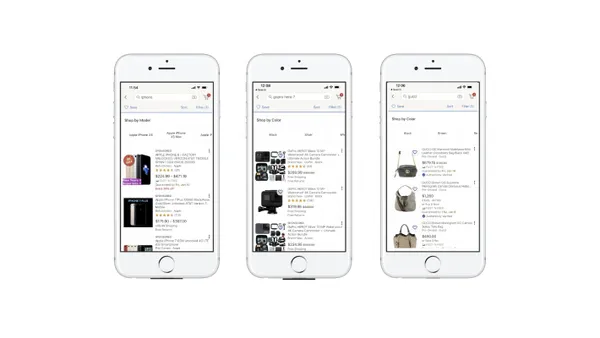MIAMI — "Retail isn't dead, mediocre retail is dead," has been the resounding sentiment at Future Stores Miami, where store operations and retail executives convened to learn about what innovations are driving stores in this new era of retailing.
It's a topic that fires up Albert Vita, the director of strategy insights and visual merchandising at The Home Depot, who presented a case study on store innovation on Wednesday.
But the bar is higher than ever to get customers through the doors, and if you've got stores as big as The Home Depot's — which range from 100,000 to 200,000 square feet — ensuring shoppers find what they need in a seamless way is a daunting task.
"Most people don't hang out at Home Depot for fun," he said. "So what happened? Something broke, or you're inspired by something. What happens is you're on a mission for paint or electrical or a drill... As that customer is in our store they are deselecting visual noise. And if you can't get your customers' attention, there's no hope."
For Home Depot, the key to in-store customer engagement isn't necessarily technology — it's human connection.
As for many big-box retailers, innovation isn't quick or easy. For a 40-year-old company with 2,283 stores and 400,000 associates, it's important that pilot experiments start out small and are measured with a fresh perspective.
As an example, Vita showed attendees a picture of the Home Depot solution center — an idea his team came up with to create space where customers could get answers to complex questions about home improvement projects. In one photo, 63 individual tests are going on at the same time, including everything from installing 80-inch monitors to custom speakers and lighting, Vita said.
"As you're going through this you have to be able to say we delivered on time, it's in the store. But how do we know it works?" he said. Using sales data to evaluate innovative projects is only the tip of the iceberg, he added. Input from customers, employees and cross-functional metrics are essential.
"Random acts of digital tend not to work... Take a step back and make sure you're asking the right questions to begin with."

Albert Vita
Director of strategy insights and visual merchandising at The Home Depot
Vita challenged the traditional metrics by which retailers measure store success, adding they should stop worrying so much about year-over-year sales, return on investment and sales per square foot. Instead, he asked the crowd to consider new metrics: What about the impact to brand impression, digital purchase intent, inspiration per square foot, return on friction, convenience for associates and customer experience?
"Customer experience is the new buzzword. I'll be honest, it's something we all want, but... what do you mean?" To him, good experiences have to blend human elements like humility, love and empathy with technology. Above all, a human touch and an empathy for the customer struggle is essential — a common thread echoed by many speakers at the conference.
Vita has developed an innovation framework. Here's how the cycle flows: First comes empathy, then the identification of friction or pain points, then the associate impact, a period of analytics and learning, followed by noticeability and speed, then pilot and exit strategy and finally the business case.
When asked by a member of the audience how many innovation projects his team pilots per year, he said it's not about the quantity, but the thoughtfulness.
"Random acts of digital tend not to work," he said. "[T]ake a step back and make sure you're asking the right questions to begin with. I get asked, how do we increase mobile in stores? That's not the right question. Instead, ask what are the known friction points? What upsets our customers in the store? How can mobile, if possible, alleviate that?"













